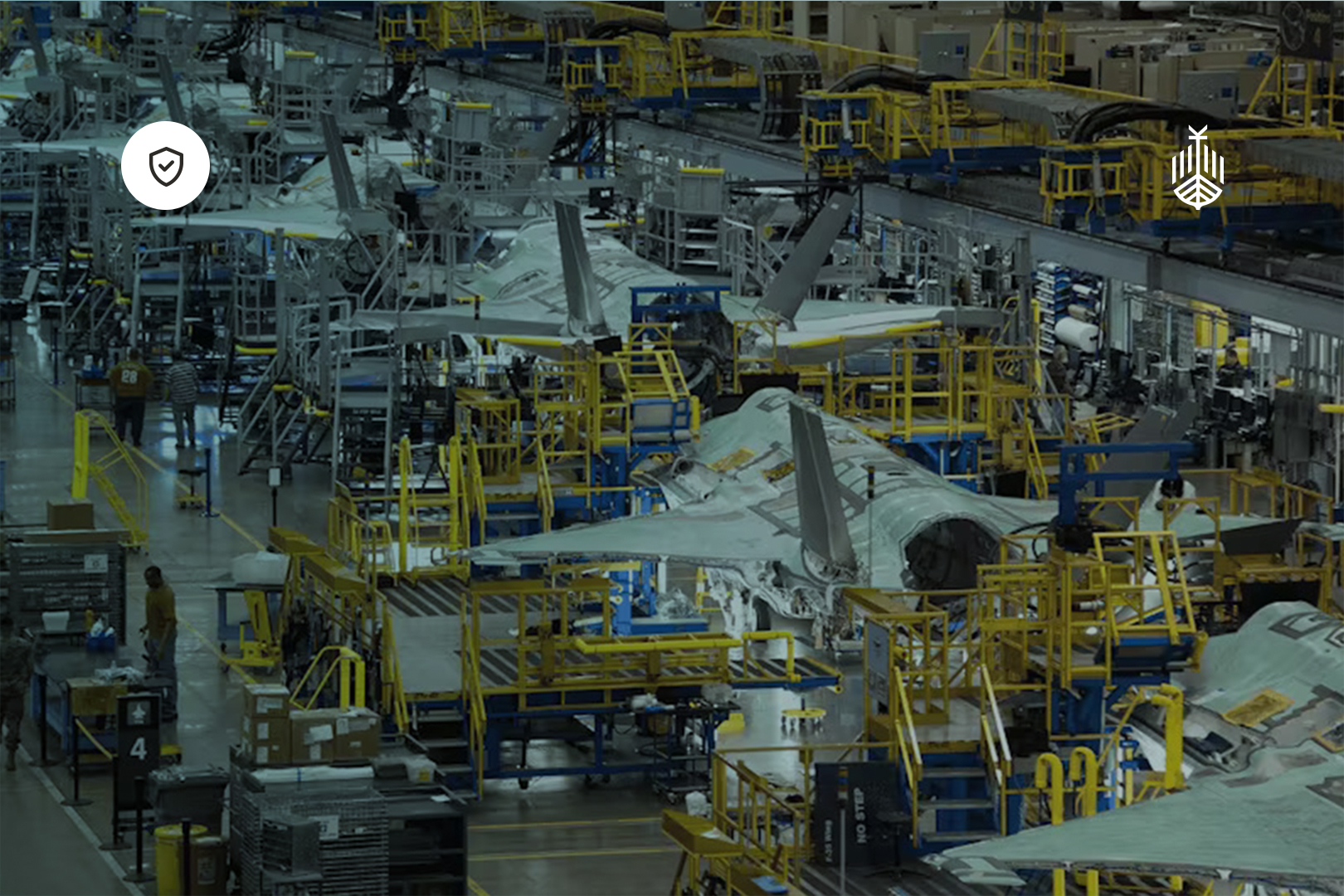Technology alone cannot win wars
From the Allies mantra of ‘steel not flesh’ in the Second World War, the 1980s Soviet idea of the ‘reconnaissance-strike complex’ to the US ‘revolution in military affairs’ of the 1990s, armies have been seeking to exploit technology to reduce casualties’ and create a decisive edge over the adversary.
It has become a central tenet of defence planning that long range precision strike would eliminate the need to slog it out using the manoeuvre of massed ground formations. As such, we have witnessed the reduction in the size of land armies the world over. At the same time, we’ve seen an ever-greater investment in high-end exquisite technologies, such as long range pression guided munitions, stealth aircraft and remotely operated systems; all of which are underpinned by highly technical and data hungry C4ISR networks.
However, the bloody close combat through entrenched positions in addition to the massed artillery duels we are witnessing in Eastern Ukraine has brought into stark relief the notion that old-style attritional warfare is alive and well.
There are two important lessons to take from this. Firstly, the observation that whilst the ‘character’ of conflict may change, the ‘nature’ is enduring; and at its heart it is still a ‘dangerous, violent, complex, often irrational and frequently chaotic’ clash of wills between opposing ideologies and as such is a deeply human undertaking.[1] Secondly, whilst we may use technology to better protect our people, despite our best efforts, technology cannot entirely replace the human aspects of conflict and of course given the asymmetric nature of competitive behaviour. People will always remain as the ultimate targets we are trying to affect.
None of this means that technology is not decisive, just that it needs to be woven into the human dynamics of conflict. For example, the Ukrainians have made good use of their digital skills to integrate AI and ML applications into their decision-making cycles. By harnessing a community of willing citizens from the supportive diaspora, using AI applications they have quickly enabled them to become part of a collaborative open-source intelligence network. Apps such as eVorog (eEnemy) allow civilians to engage with a Chatbot that collects and triages crowd-sourced intelligence. Similarly, the Ukrainian tech company Primer modified its commercial AI-enabled voice transcription and translation service shortly after the Russian invasion, so that it could process intercepted Russian communications and automatically highlight information concerning the Ukrainian forces. These novel uses of AI don’t replace traditional surveillance and reconnaissance methods. They simply enhance them.
The prolific use of uncrewed and sometimes even autonomous air systems (UAS), drones to you and I, allows both the Russians and Ukrainians to increase the breadth, reach, and persistence of their tactical reconnaissance capabilities, therefore allowing them to make better use of their traditional indirect fires capabilities. As a result, tactics are rapidly evolving, and behaviours are changing.
The pace of technological change can feel disorientating and perhaps the introduction of Large Language Models (LLMs), that have rudely encroached into almost every part of our lives over the last few months is a case in point. LLMs such as Chat GPT-4 are impressive and disconcerting in equal measure. And whilst I’m not bold enough to predict their impact on future battlefields, I am confident in my assertion that they will change almost every aspect of soldiering, far beyond what we can currently envision.
But of course, as with the introduction of Radars, GPS and digital computing, these changes will be to the ‘character’ and not the ‘nature’ of conflict. The human aspects of warfare (as with social relationships, creativity, and politics) will be enhanced or undermined, but not replaced by machines; this makes the integration and synthesis of machines into the human decision-cycles a decisive aspect of contemporary and future conflict. Perhaps the most decisive.
Will Human-Machine teamwork be the decisive edge?
The integration of human-machine teaming in the defence and military industry has and will continue to unlock new possibilities, where the strengths of both humans and autonomous systems are harnessed to maximize effectiveness and ensure the accomplishment of missions.
It may be worth at this point stopping to define what we actually mean by ‘machines’. We perhaps need to dispel any notions of robots being facsimiles of humans such as the Terminator or CP3O. Many are specialised devices such as uncrewed systems, flying or driving across the battlefield or sorting boxes in warehouses; or they exist without corporeal bodies at all as mere lines of code that enable command and control networks or that act as software assistants identifying patterns and trends in data.
Recognising the comparative strength and weaknesses of machines and humans is important to understanding how we can best to cooperate with them. One of the key advantages of human-machine teaming is improved decision-making capabilities - humans possess cognitive skills, situational awareness, intuition, lived experience, as well as a creative flair that goes well beyond that of the synthetic creativity of current AI.
However, machines excel in processing vast amounts of data, pattern recognition, and quick analysis. But perhaps the biggest benefit of AI machines is the network effect that allows learned information to be near-instantly shared across the entire network. When an autonomous system is employed alongside human decision-makers, it can rapidly gather and process data, presenting valuable information to the human operator, enabling them to make well-informed choices. For instance, drone reconnaissance systems can collect real-time intelligence, providing the human operator with critical information necessary for tactical decisions or strategic planning.
Human-machine teaming enhances operational efficiency by allowing machines to execute tedious, vastly complicated, repetitive, or dangerous tasks. Autonomous systems also have the ability to withstand extreme physical conditions, operate in dangerous environments, and rapidly adapt to changing circumstances. This enables human operators to focus on more complex and creative aspects of military operations, such as tactical employment of capability, critical decision-making or higher-level strategies. Moreover, human-machine teaming enhances mission resilience and adaptability by allowing for quick recovery and backup systems in the event of a breakdown or loss and fusing real-time machine data with human self-awareness, compassion and cunning.
“As machines become more and more efficient and perfect, so it will become clear that imperfection is the greatness of man.”
Ernst Fisher – The necessity of Art, 1959
Perhaps a paradox of the Russian invasion of Ukraine is that as more technology is employed on the battlefield, the more the war descends into a pitched battle of wills relying on the human traits of cunning, ingenuity and imperfect and unpredictable behaviours to gain advantage. The combination of persistent surveillance from drones and precision strike from indirect fires has forced combatants to find novel ways to hide from and deceive their adversaries. It has been a forcing function for new dispersal tactics and new approaches to concealment. Despite the Russians having a technical force overmatch, the Ukrainian adoption of Western style ‘Mission Command’ - allowing greater autonomy and agility combined with a less dogmatic approach to technical integration and trials of new technology - have proven to be battle winning for the Ukrainian forces.
The evolving role of human-machine has and will continue to revolutionize modern warfare. By combining the strengths of human ingenuity and creativity with the power of big data, autonomous systems, persistent and pervasive sensor networks, the effectiveness and mission success of military operations will continue to be greatly enhanced. Simply, the sum of human and machine is greater than the constituent parts.
The examples of ingenuity and adaptability of the Ukrainians showcase how the integration of human-machine teaming has yielded remarkable results. As technology continues to advance, further exploration and development of this collaboration will undoubtedly shape the future. To exploit this we must not lose sight of the fact that - whilst technology gives us better communications, increases efficiency and precision, and provides access to ever-more information - it is simply an enabler, part of the wider team, and not a goal in itself.
As with any team building, the power comes through hard-won understanding, trust, practice and experimentation.
[1] It is the authors assertion that this enduring quality of human conflict will only be Invalidated if and when machine decision-making reaches a level of sophistication that it effectively has sentience. This is currently still in the realms of Sci-Fi and therefore falls outside the scope of this article.














